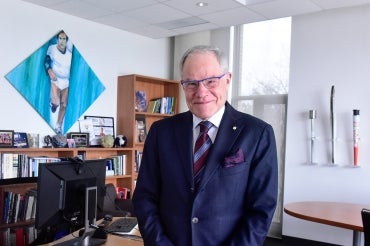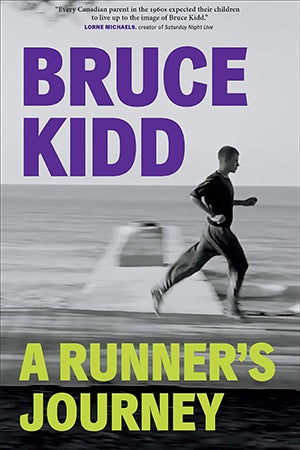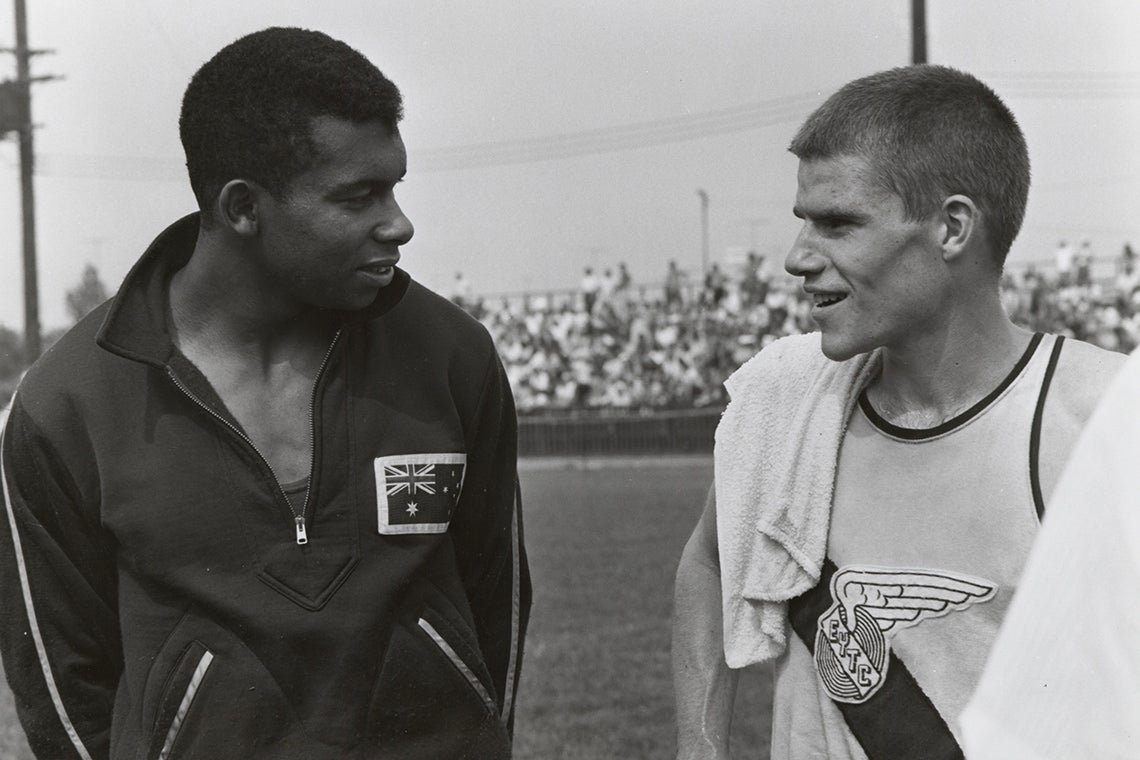A runner's journey: Bruce Kidd recounts a life at the intersection of sport, politics and social change

Published: September 21, 2021
 Bruce Kidd, a professor emeritus in the the University of Toronto’s Faculty of Kinesiology & Physical Education, writes in the introduction to his new book, A Runner’s Journey, that, “while an autobiography covers an entire life ... this is about my life in sport.”
Bruce Kidd, a professor emeritus in the the University of Toronto’s Faculty of Kinesiology & Physical Education, writes in the introduction to his new book, A Runner’s Journey, that, “while an autobiography covers an entire life ... this is about my life in sport.”
But it is also much more.
Looking back at his life through the lens of sport, Kidd, a former Olympic athlete, member of Canada’s Sports Hall of Fame and the Canadian Olympic Hall of Fame, takes readers on a journey through some of the most significant social and political movements of the last 70 years.
Divided into three parts, the book traces Kidd’s athletic career in track and field – the highs and lows – and follows his circuitous route to becoming an activist and academic in sport studies.
Writer Jelena Damjanovic recently caught up with Kidd, who is also U of T’s ombudsperson and a former principal of U of T Scarborough, to chat about some of the defining moments of his life and career ahead of a Sept. 23 book launch event at Varsity Stadium.
You write about growing up loving sports of all kinds. How did you settle on running?
I had always loved to run, but knew nothing about the longer distances until forced to run a mile in a Grade 10 physical education class at Malvern Collegiate. When I ran it easily, the teacher, Mr. Grabb, encouraged me to enter the school’s harrier championship. When I won that easily, he recruited me to the school team. I loved it and found I was good at it. In my very first season, I won two city championships.
What was it about running that beat out all the other sports you enjoyed?
In track, you were the author of your own success and failure. That was very enticing.
You were a sensation on the North American track scene in the early 1960s. How did you recover from a disappointing showing in the 1964 Olympic Games in Tokyo?
When I lost in Tokyo, I thought my life was over. It took me quite a while to recover. But supported by teammates, opponents, family and professors at U of T, I realized that life continued and there were other exciting avenues to pursue. I gradually learned to overcome the fear of failure. If I had survived the humiliation of Tokyo, I told myself, I could survive anything. It made it easier to take on difficult challenges.
What were some of your earliest lessons about sport values?
I was very lucky in the parents and coaches I had. They taught me that everyone deserved opportunity and fair treatment, and that racist and anti-Semitic trash talk had no place in sports.
Later on in life, you had more disturbing introductions to the way in which sport was affected by racism and sexism. What were some of the more poignant ones?
It was hard to see my Black teammate Harry Jerome criticized for ‘quitting’ in a major race when he was so clearly injured, and women teammates having to change behind a tree while we had heated dressing rooms with hot showers. In the late 1950s and early 1960s, girls and women were actively discouraged from sport.

Harry Jerome (left) and Bruce Kidd (right) and at British Empire Game Trials in East York, August 1962 (photo by Mihkel Turk)
Some of your detractors criticized you for pointing out things that needed improving in sports. How did you respond?
At first I was combative in the spirit of 1960s student radicalism, lashing back at my critics. That gave me the satisfaction of getting their attention, yet it didn’t help win over other people or bring about change. Gradually, with trial and error and mentoring from some very astute people, I learned to focus on what could be improved. That took a while, and constitutes a big part of the middle part the memoir.
What role did working as a civil servant at the Treasury Board Secretariat play in teaching you how to work the system from within?
Treasury Board taught me how to navigate a big cumbersome bureaucracy like the provincial government and the University of Toronto. It also taught me that it’s not enough to change policy – but to ensure its effective implementation.
Of all the battles you fought, and continue to fight, which one would you single out as most important to you?
I’m very proud of those battles, but perhaps I’m proudest of the role I played in the international campaign to isolate apartheid sport in South Africa. It not only helped eradicate apartheid but turned international sports towards human rights.
What’s the most important battle in sport today?
To realize sport for all as a basic human right and a contribution to population health. We talk all the time about the benefits of sport and physical activity, but they’re only available to a minority of the population. With COVID, woeful participation levels fell even further. It’s a Canadian and worldwide crisis.



